Well, as some of you might have noticed, I am quite a fan of animation. I also am an unapologetic aficionado of Japanese culture. So it was just a matter of time until I started overanalyzing an Hayao Miyazaki’s movie. Well, the time has come. And I am going to overanalyze my favorite: Princess Mononoke.

So yeah, I see you coming: “Well actually Spirited Away is better…” but let it be known that I will not change my mind on this movie. It has giant talking wolves, the god of life and destruction, strong, complex female characters, medievalist ambiance, conflict, war, love, etc. I received it for Christmas when I was eight. It left a huge impression on child-me, and I can say in all objectivity that this is Miyazaki’s grand work. I even rewatch it nearly every year.
Anyway, I am not here to talk to you about how beautiful this film is. Nor I am here to gloat about the amazing music composed by Joe Hisaishi. I am here to talk about another aspect of this movie.
It has been brought to my knowledge that it is currently trendy to talk about Disney’s villains. Or rather about Disney’s new policy of not doing villains as they use to. I haven’t seen Moana yet so I can’t speak for it, but for the two last Disney princess movies that I saw, Brave and Frozen, the antagonists of the films were of a new kind. And even if both of these movies were, in my view, somehow disappointing, I really like this new trend. Not that I don’t like good old Disney villains, but I also appreciate when studios are taking a risk, and that new kinds of antagonists allow a different story to be told.
However, the only place where this is new is Disney. Other studios have been doing this for a little while. And this brings us back to Princess Mononoke.
What’s the story?
This piece is not going to be spoiler-free. So if you want to see Princess Mononoke without knowing more than the synopsis, leave this page. Come back later, though. However, if you haven’t seen the movie yet, but still want to enjoy this great piece of meta, I need to update you a bit. So strap in, this is Princess Mononoke’s plot:
Ashitaka is the prince of a tribe with a different culture than a traditional Japanese one (could this be a metaphor for Ainu or Ryukyuan people? That would be neat!). One day a monster, mainly constituted of what looks like black maggots/leeches attacks the village.
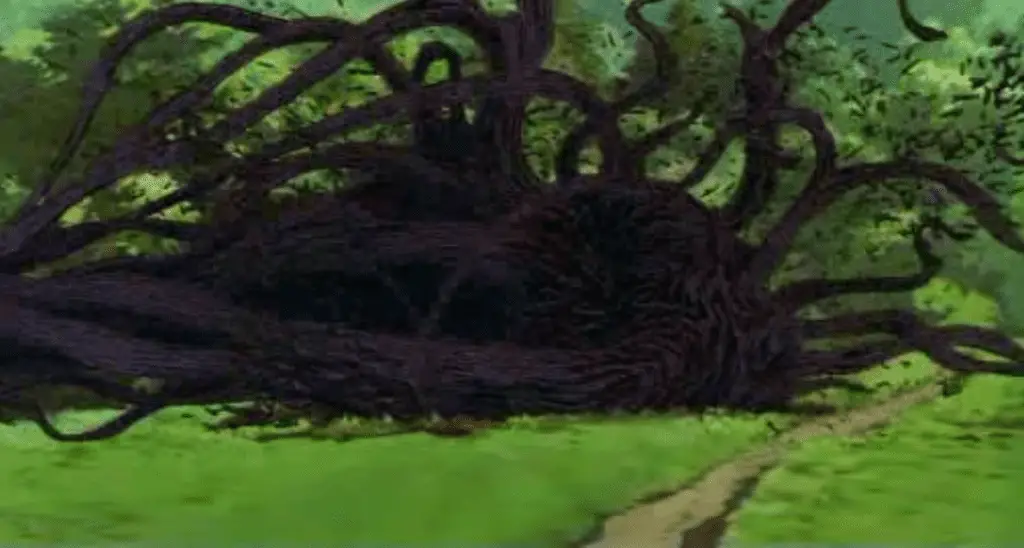
Unfortunately, even though he manages to kill the monster, Ashitaka is touched by those made-of-weird-maggots tentacles. The monster loses the maggots before dying, and turns back into a giant, talking boar. It reveals that it hates humans and that now Ashitaka is cursed. The shaman of the village confirms the diagnosis. Ashitaka is cursed; he can’t stay in the village, and if he wants to survive he’d better “see with eyes unclouded by hate”. So Ashitaka pulls out his best Mulan impression and leaves.
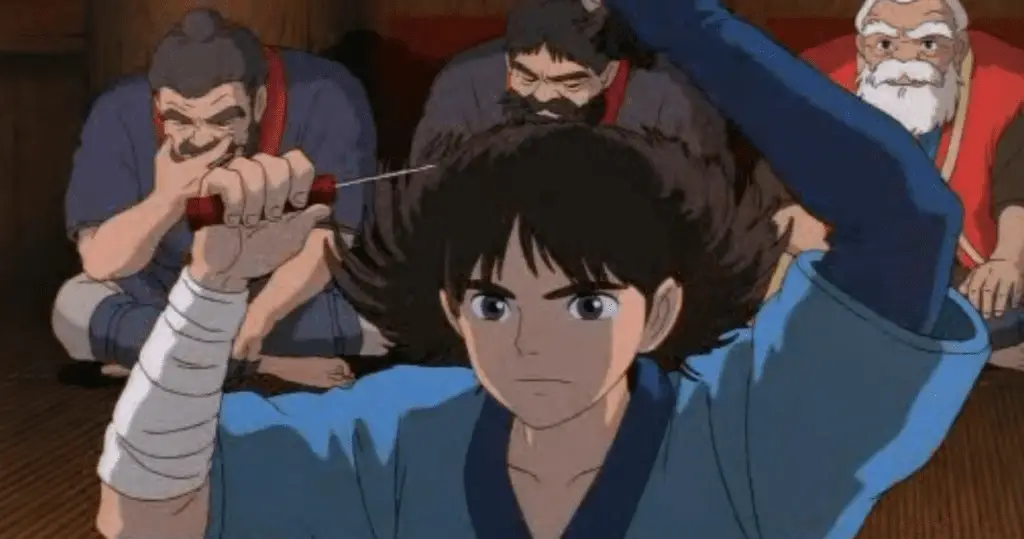
After a time, having discovered that his cursed arm has an appetite for bloodshed, Ashitaka arrives at a mining village headed by Lady Eboshi. The village is currently at war with the forest spirit (animals gifted with the use of language and colossal sizes) whose most prominent figure is San, the Mononoke Princess, an orphan child raised by Moro, the she-wolf leader of the pack.
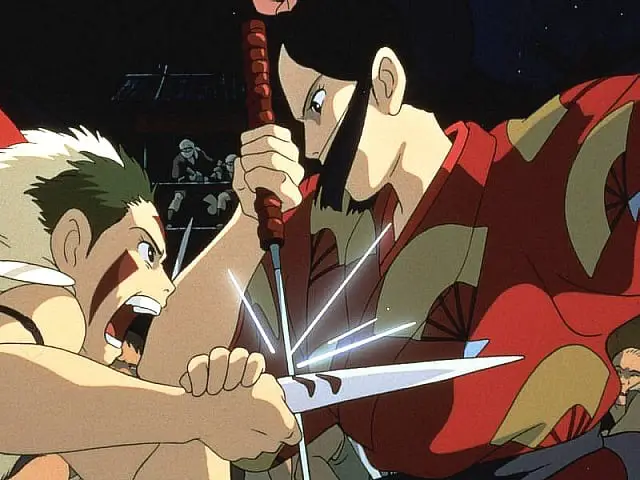
The human village wants to use the iron vein which is in the forest. The Mononoke (let’s just refer to them like this) want to get rid of the village in order to protect their home from destruction. Fighting ensues. Oh, and there is also the emperor who wants to obtain the head of the deer-god and some other lord who wants to steal the village from Lady Eboshi.
Everyone is violently trying to defend their best interest while Ashitaka experiences both the beauty of nature and of humankind, but also their harshness. He also tries to avoid to getting killed by his curse.
All conflicts end thanks to a literal Deus Ex Machina that will destroy the world. Even if most of characters survive the climax of the movie, they all reconsider their position. Lady Eboshi is going to rebuild a village more respectful of nature. San, even if she doesn’t forgive them, will not attack the humans anymore. Ashitaka is going to stay at the human village despite his blooming romance with San. Everything is at the very least, peaceful.
So who are the bad guys here?
The easy answer, especially for a movie with such a strong environmental message, would be the humans. For example, neither the emperor nor the ambitious lord have anything positive to bring to the story. However, since they both don’t actually appear on screen they not likely the main villain.
So what about the human village that wants to destroy the forest? Well, you probably haven’t been paying enough attention to the movie if you think that, and I’ll tell you why.
The humans aren’t wrong
First off, it’s important to note that the village does not want to destroy the forest. The villagers want to exploit the iron vein. It will destroy the forest yes, but there is no other way.
It is not done out of evil intention. Pragmatism is the motivation here. The inhabitants of the village were always miners, but the iron vein next to the village dried out. If they want to live as they always have, they have to go the forest. More than that, they are shown as caring for each other unconditionally. They are courageous. The battle against the boars impacts them physically and mentally as much as it does the animals.
Then there is Lady Eboshi, and the least we can say is that this woman is not joking around.
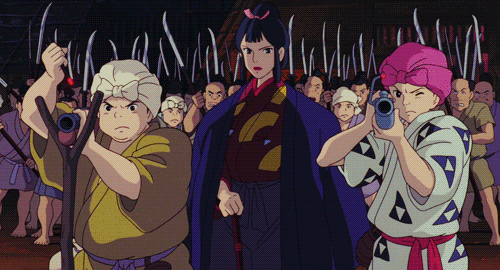
She is the leader of the village. She is a war leader, sure of herself, courageous, does not hesitate to kill her enemies, etc… It’s evident that she has potential as a villain, and yet she is not one. What she does, she does to protect the village and ensure its existence. She makes sure the weapons that are designed can be used by anyone to ensure that even the women can defend themselves. She does not hate San, and she even mentions that she would not mind bringing her back to civilization, but as she is, San is a problem. Lady Eboshi is never an opposing force to Ashitaka’s quest to “see with eyes unclouded by hate”, either. Actually, she wants to convince him that the village is a good place.
Her position of non-villain is even confirmed by those who inhabit the village. The women in the village are former sex workers that Lady Eboshi helped to get out of a brothel. Not only are they now free (they were essentially slaves of the brothel), but Lady Eboshi respects and trusts them enough to entrust them with the protection of the fort when she is not here. She also cares for lepers, giving them treatment and a purpose. Lady Eboshi is undoubtedly a hero for her people. And her people are the sick and rejected of society.
Despite her participation in the final disaster, the fact that the cohesion and organization that she has created in the village is what saves the villagers is important. Of course her last words, after having her arm ripped off by Moro, leaves little doubt on what kind of character she is:

Those are not the words of a villain. They’re not even the words of someone who was entirely wrong. Those are the words of someone who wasn’t right.
And she is not the only one.
The Mononoke aren’t right
At first glance, the Mononoke have everything going for them. They are the animals in an ecological movie goddamnit! Indeed, not wanting your home to be destroyed is a pretty good position to have, morally speaking. And yet…
There are three types of Mononoke in this film: the wolves, the boars, and the very creepy monkeys. The wolves are lead by Moro, and the entire pack is composed of Moro, her two sons, and San. The boars are lead by by Ottoko, a blind white boar. They used to be lead by Nago, the boar who gave the curse to Ashitaka; they are far more numerous than the wolves. And the monkeys are creepy, that’s all there is to know about them.
Now let’s go back to the protecting their home thing. The ones who started the conflict weren’t the villagers. They did wander to the wood to exploit iron, but they were attacked, hurt, and killed by Nago. Bear in mind that we are referring to talking animals here. Their first answer to human incursion was violence. Not exactly the behavior of an unproblematic party (and that’s probably why Nago was cursed in the first place). That’s what brought the human military attack on the forest. Which lead to an escalation of anger between both parties.
The three kinds of Mononoke have, during the film, different strategies to fight against the humans.
The wolves want to get rid of Lady Eboshi, the old “cutting the head of the serpent” thing, and attack iron convoys. It is very clear that they have killed humans, and not only soldiers. And, even if Moro took care of San when her parents abandoned her, the fact that they do kill people, who weren’t directly trying to hurt them, leads us to see them as the killers that they are. Plus killing Lady Eboshi will not rid them of the problem because the fort will fall under the command of the other lord or the emperor. But can we actually judge a wolf on her understanding of human politics?
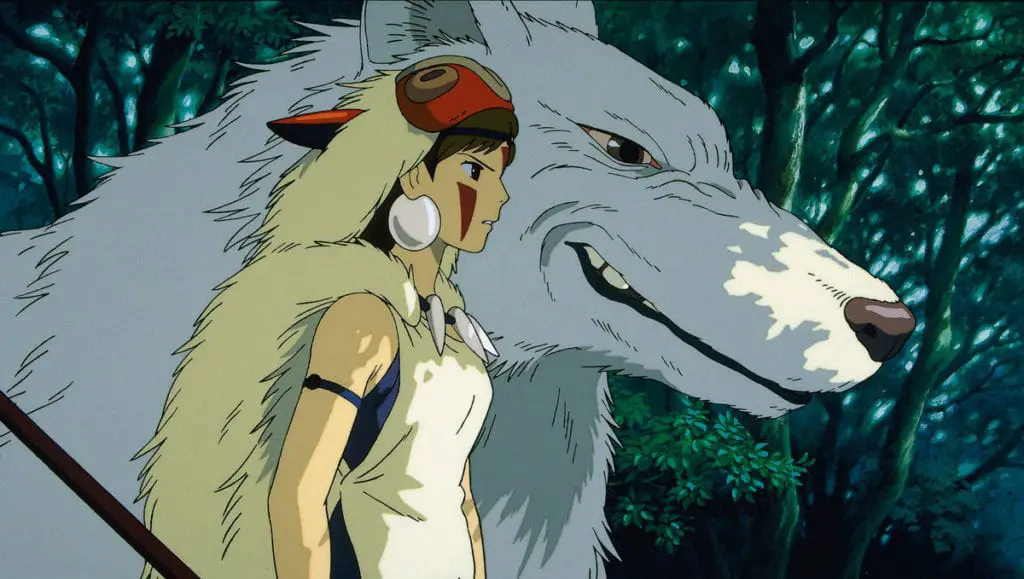
The boars want to fight and destroy the humans in a good old pitched battle. Pitched battle that, according to everyone (Ashitaka and Moro), will be a catastrophe for the boars. But still Ottoko leads his followers to fight with the humans in an open field. The boars are massacred.
The monkeys at first try to replant trees but when they realize that it isn’t working they decide that they are going to eat the humans to become like them. Do I have to explain why becoming your enemy in order to defeat your enemy is more than morally dubious? No? Great.
So in addition to clearly not having a very efficient method to get rid of the humans there are other factors that tend to makes us realize that there is an inherent problem with the Mononoke. They are disappearing, and they were disappearing before the conflict started. Moro and Ottoko are the biggest of all the Mononoke, and none of the new generations seems to be able to reach their potential sizes. They speak less and less. Ottoko states that more and more of the young boars are stupid and unable to speak. We have no canon proof that San’s brothers can speak either (since we only see them talking with San and they never make a human sound around other humans).
They are slowly becoming disenchanted because the time for Nature to not share space with humans is over. That’s probably why the deer-god is not helping them, (you know, other than the general “I don’t give a damn about your suffering” mindset common among gods), and why Moro seems so tired of everything. And most of all, that’s why both Moro and Ottoko are killed by the end of the movie.
So here we are: yes, humans should treat nature with more respect, but them disappearing in order to go back to primitive times is not the solution. The Mononoke aren’t right.
There is no villain in Princess Mononoke
So here we are, with a film whose plot is engaging but without a clear antagonist. What Princess Mononoke has is a conflict. A conflict that has led both parties to commit incommensurable atrocities. They have both gone too far, and it is made pretty clear by what Ashitaka says when Lady Eboshi and San are fighting.
There’s a demon inside you. It’s inside both of you.
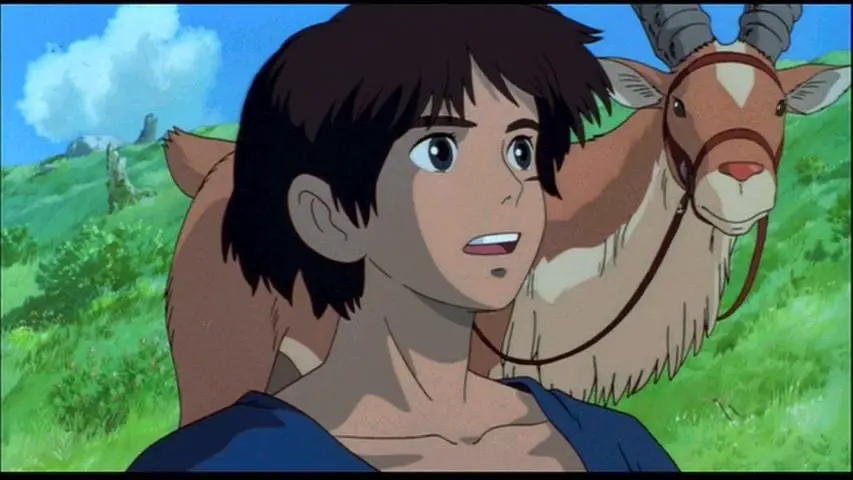
Because Princess Mononoke is about moderation. It is about respect. It is about peace. These kinds of stories do not need a villain to work. They only needs you to realize that sometimes you cannot be right without also being a bit wrong.

